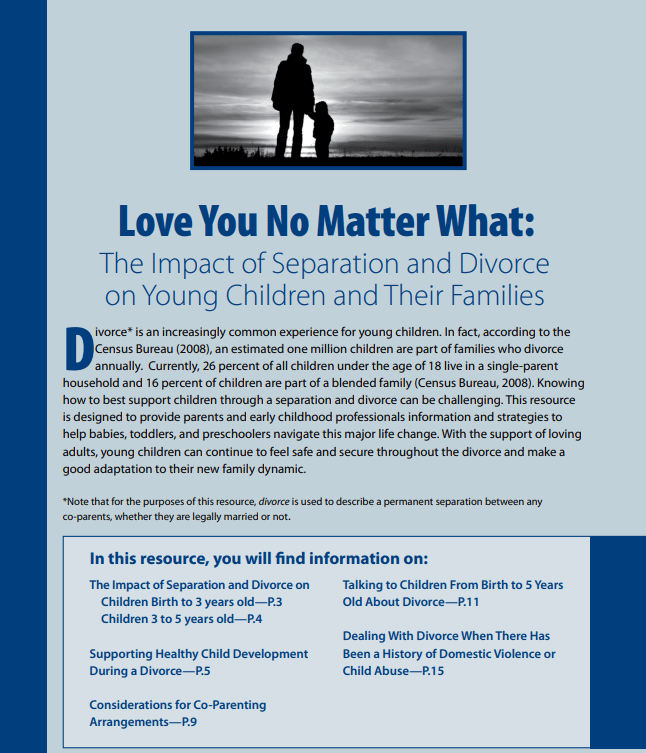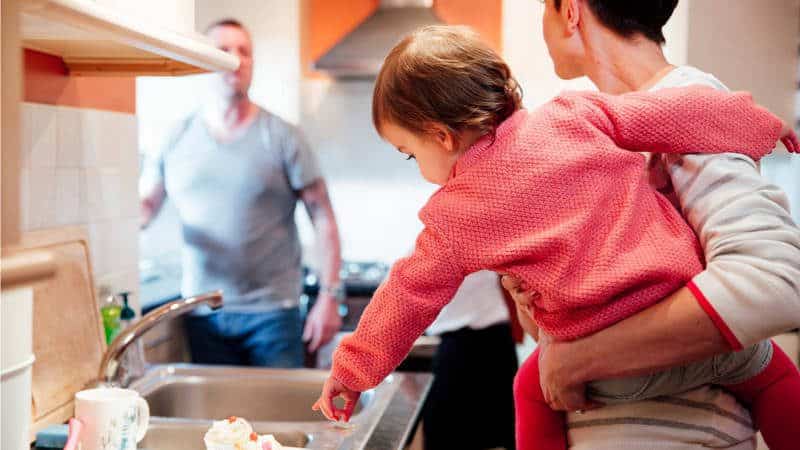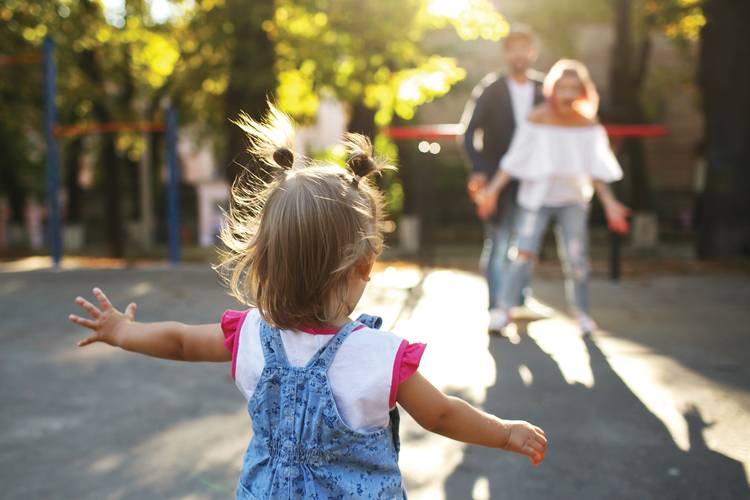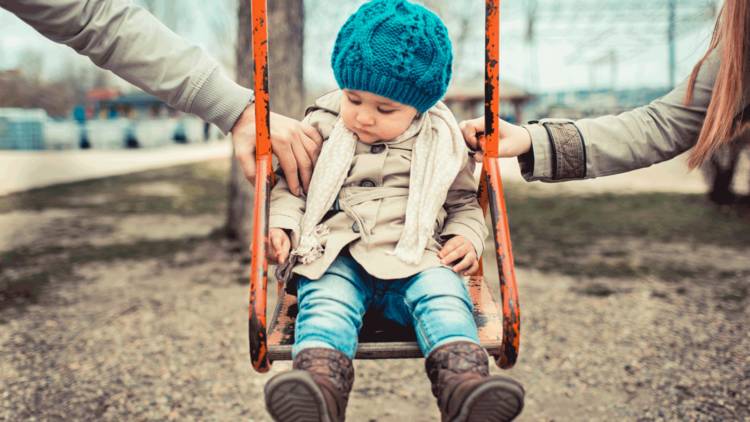Our comprehensive resource explains how divorce impacts young children and how adults can help.


Most of all, young children need to know that their people will be there for them, no matter what. Babies as young as 3 months old are affected by parents’ emotions. So, if parents are fighting, or feeling anxious or sad, their young child knows that something’s not right in his world.
Although divorce can be a healthy decision for families, young children don’t have any perspective for making sense of this major change. It is natural and expected that they will feel grief and loss.
Parents often search for just the right words to explain separation and divorce in a way that will provide comfort to children. Explanations won’t mean anything to children younger than 18 months old. Children this age will benefit most from physical soothing and comfort (hugs, cuddles, and kisses). Little ones need parents to supply words for the feelings they can’t yet express: You’re upset that Dad’s not here. You will see him tomorrow. I know it’s hard. I love you and I’m here for you. Video-chatting and showing children pictures or videos of their other parent can help with the separation.
Beginning at about 18–24 months, parents can use simple, age-appropriate language to explain.
You might say: Mommy and Daddy have decided to live in different houses. Mommy and Daddy still love you very much. We will always love you and take very good care of you.
You might say: Tomorrow Mommy will be leaving our house and moving to another house. You will stay here with me some days and stay with Mommy on other days. It can be very helpful for the parent who is moving out to have a place to live already set up before telling the child about the separation. Seeing where mom or dad will be living and that there is a place there for the child—a place to sleep, some toys, etc.—can relieve a lot of worry.
You might say (even to a baby): You are going to Daddy’s house today. You will bring your clothes and your teddy bear. You will have dinner with Daddy. Then you will sleep at his house. Then I will pick you up in the morning after you wake up and get dressed.
It is common for preschoolers to express a desire or hope that their parents will get back together, especially when a couple is co-parenting well. In this situation, it can be difficult for preschoolers to understand why they can’t live in one house again. Parents may need to explain on an on-going basis: I know you really want us to all live together again. But that is not going to happen. Mommy and Mama both love you very much and will continue to work together to be great parents to you. But we have chosen to live separately; we won’t be married anymore.
Young children may also share (or show) worries about being abandoned or be concerned that they may themselves “get divorced” from a parent. Parents can reassure children with clear and concrete responses: We will always love you and take care of you. We will never leave you. But we will not live in the same house again.
Our comprehensive resource explains how divorce impacts young children and how adults can help.

Children may experience changes in behavior in the year following a divorce. They may be happy and engaged during some parts of the day, and angry, depressed, or withdrawn during others. It can be easy to overlook children’s sadness when parents are struggling to manage their own difficult emotions.
Babies and toddlers don’t have the words to express their feelings. They may show their distress and confusion in other ways. For example, they may:
Preschoolers have a better understanding of cause and effect. Mom and Dad got divorced, and Dad doesn’t live here anymore. But they don’t understand adult relationships or why people get divorced. They may think they are the cause of the divorce, or that they can do something to make things better. Preschoolers may show the behavioral changes described above, plus a few that are more typical of children their age. For example, they may:

It’s not unusual for young children to have difficulty making the transition from one parent’s home to the other. It’s often the switch itself, rather than the destination, that is stressful. Young children who are upset during these transfers often become happy, settled, and content once in the other parent’s home. Here’s what parents can do to make the process easier:
Divorce is a stressful experience for all members of the family, and young children are particularly vulnerable. But they are also resilient. With patience, sensitivity, and support, parents and other loved ones can help children navigate this major life change.

Enjoying this resource? Donate to support our library of resources for parents, professionals and policymakers.

|
Donations matched! One-time gifts doubled. Monthly gifts tripled.
|